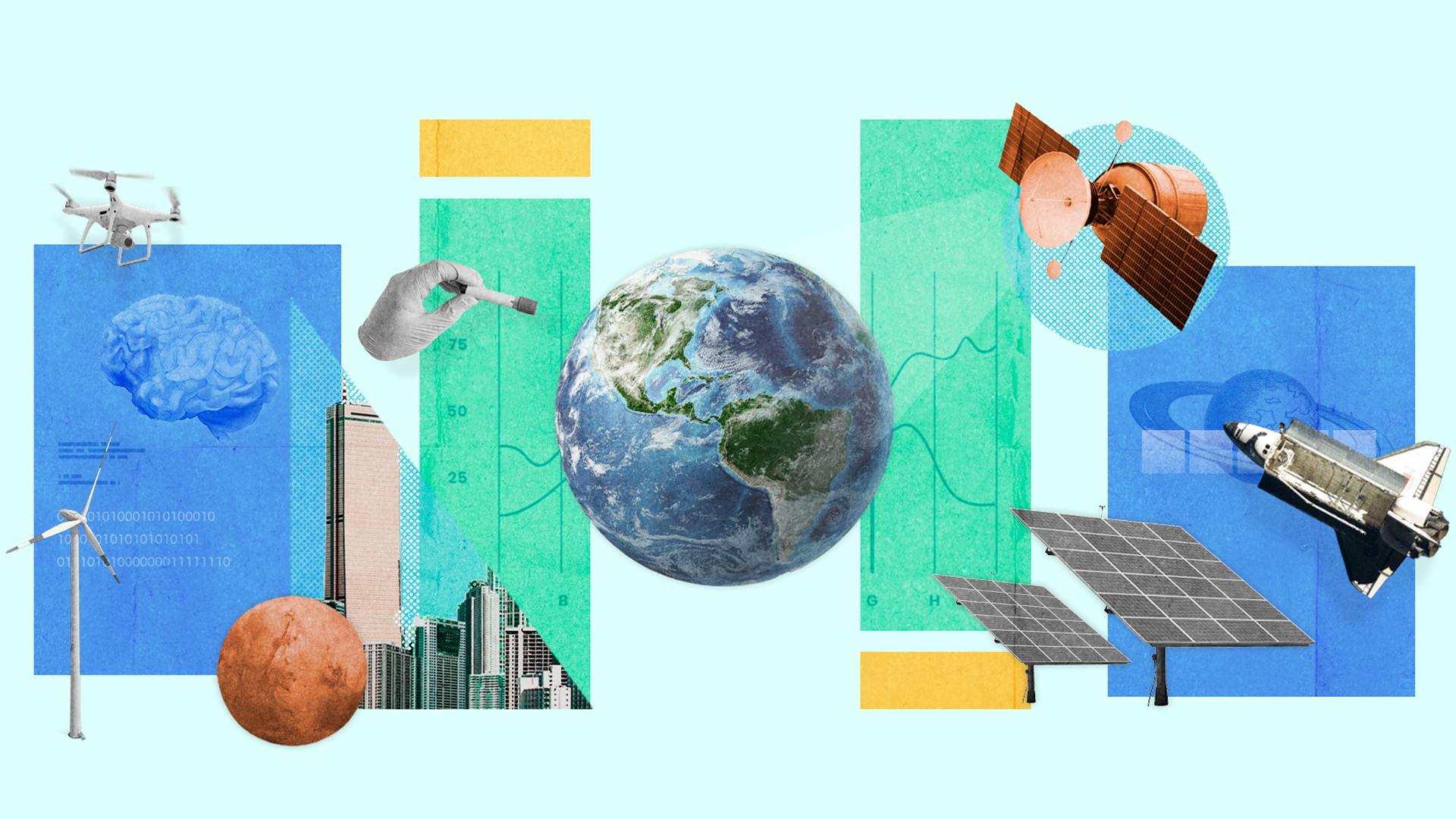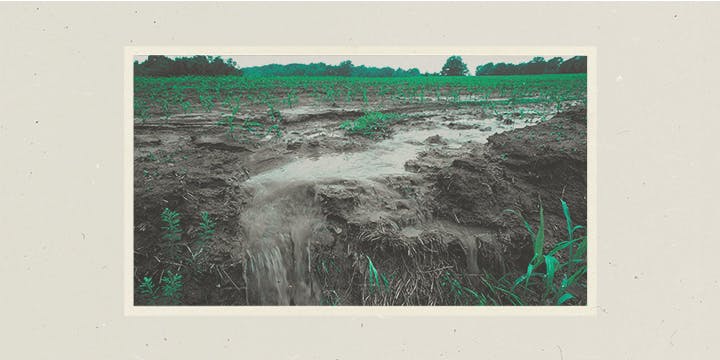Editor’s note: Today we're excited to officially announce the launch of Foundations & Frontiers, an essay series by Contrary. Due to tremendous reader response to the early entries in the series which have been published over the last six months, we're breaking Foundations & Frontiers out into its own media publication.
Foundations & Frontiers is a digital magazine that explores the technologies that will define the future. Just as Contrary is an investment firm that backs bold founders building the technologies of tomorrow, this series revisits the foundations of technologies to help arm builders with the context and ideas to push forward the frontier of innovation.
Read on to get a more detailed sense of the vision of the series, as well as a recap of some of our existing essays and a roadmap of what to expect going forward. Foundations & Frontiers essays are published here every other Thursday. Sign up for Contrary’s newsletter below to receive new essays straight to your inbox.
Technological advancements are often spoken of as if they’re inevitable – as though it’s only a matter of time until the next great discovery is unlocked, just as it’s only a matter of time until the next version of the iPhone is released. In reality, nothing could be further from the truth.
Many of the world’s most impactful inventions, from ammonia synthesis to the integrated circuit, did not emerge as a result of de novo findings but rather came from the innovative combination of existing technologies. Looked at this way, rather than being documented as dry encyclopedia entries, technologies should really be understood through stories that reflect the meeting points of disparate concepts brought together by engineers and scientists through time.
Re-discovering the origins of those concepts also gives us a blueprint for how we can continue designing new technologies with the ideas emerging on the frontiers of knowledge today. To this end, Foundations & Frontiers is a series devoted to tracing classic scientific and technical ideas from their inception to the imaginative innovations they feature in today.
Tech is a Human Story
More often than not, the most valuable inventions in human history were not produced in ivory towers, but instead were the projects of bright, well-read tinkerers.
For instance, at the turn of the 20th century, a German chemical giant hired a scientist named Fritz Haber to investigate whether it would be possible to synthesize ammonia artificially. The resulting process became one of the most consequential discoveries in human history, producing enough synthetic fertilizer to increase the global population from 1 to 7 billion in just 100 years.
Similarly, it was a young engineering grad named Theodore Maiman, working at Hughes Aerospace in Culver City who developed the first laser. What was just a work assignment for Maiman ended up becoming an indispensable technology for the modern world, without which CD players, fiber-optic cable, and indeed the digital revolution would not have transpired.
Notably, both Haber and Maiman won Nobel Prizes for the breakthroughs they achieved entirely under the umbrella of the private sector. Their stories are told in this series’ Technology of Food Production and Lidar and the Future of Computer Vision essays, respectively, but those are just two examples among thousands.
Today, there is an ever-expanding number of bright minds operating outside of the institutional confines of corporate giants or government labs. In the 21st century, we increasingly live in a world where small teams of intelligent and curious minds backed by venture capitalists are the ones creating the next massive jumps in technological capabilities. Examples include the startups that stand at the forefront of frontier technologies like artificial intelligence and fusion.
The stories of every technology we see and use today are inherently human. People of all ages, of all levels of prestige, with all their personal shortcomings and difficulties of circumstance, are the ones who create technological history. Unfortunately, this fact is often obscured in technical jargon.
It’s important to understand why the people who contributed critical innovations did what they did, what ideas were available to them, and how they performed the alchemy necessary to bring something new and better into the world in their respective eras.
One of the core things Foundations & Frontiers aspires to do is bring the human aspect to the fore, to remind readers that they are themselves no different from the famous names in science and technology that we all know.
Mapping the Technological Frontier
As the complexity of our technological systems grew, the sizes of circuits shrunk down to nano-scales, and the industrial processes powering our societies were moved increasingly out of sight, our familiarity with our tools eroded. One day, we found ourselves with a growing discrepancy between our dependence on technology and our limited understanding of it.
As Carl Sagan once put it, “we’ve arranged a society based on science and technology in which nobody understands anything about science and technology.” Not only does this pose problems for our ability to maintain our current systems and explain them well to future generations, it limits our ability to think creatively about how we might otherwise design these technologies in the first place.
Many have gotten into the habit of delegating technical understanding to domain specialists. Unfortunately, experts likely won’t save us. Specialties can create knowledge silos, where the latest in technical knowledge goes unnoticed. This is a shame.
In order for technological innovation to occur, ideas from different fields have to interact. The largest breakthroughs don't usually come from incremental improvements within a given silo. Rather, they arise from combinations of ideas from completely disparate fields. There's a sort of magic that happens when different forms of knowledge are strung together and woven into a new idea. This can’t happen in an environment of over-specialization.
To help address this problem and give builders the ideas and inspiration they need to innovate, Foundations & Frontiers features stories covering everything from the future of metallurgy to microchips, battery tech, satellites, carbon removal, cell therapies, robotics, among others. Future essays will address topics from innovations in solar panel technology to gene editing, additive manufacturing, novel computing interfaces, and more.
This is a series that aspires to be a destination for curious readers and thinkers who wish to acquaint themselves with the latest in scientific and technical thought — with the hope that one day, some of those readers might just become the world’s next great founders and inventors too.
Disclosure: Nothing presented within this article is intended to constitute legal, business, investment or tax advice, and under no circumstances should any information provided herein be used or considered as an offer to sell or a solicitation of an offer to buy an interest in any investment fund managed by Contrary LLC (“Contrary”) nor does such information constitute an offer to provide investment advisory services. Information provided reflects Contrary’s views as of a time, whereby such views are subject to change at any point and Contrary shall not be obligated to provide notice of any change. Companies mentioned in this article may be a representative sample of portfolio companies in which Contrary has invested in which the author believes such companies fit the objective criteria stated in commentary, which do not reflect all investments made by Contrary. No assumptions should be made that investments listed above were or will be profitable. Due to various risks and uncertainties, actual events, results or the actual experience may differ materially from those reflected or contemplated in these statements. Nothing contained in this article may be relied upon as a guarantee or assurance as to the future success of any particular company. Past performance is not indicative of future results. A list of investments made by Contrary (excluding investments for which the issuer has not provided permission for Contrary to disclose publicly, Fund of Fund investments and investments in which total invested capital is no more than $50,000) is available at www.contrary.com/investments.
Certain information contained in here has been obtained from third-party sources, including from portfolio companies of funds managed by Contrary. While taken from sources believed to be reliable, Contrary has not independently verified such information and makes no representations about the enduring accuracy of the information or its appropriateness for a given situation. Charts and graphs provided within are for informational purposes solely and should not be relied upon when making any investment decision. Please see www.contrary.com/legal for additional important information.



